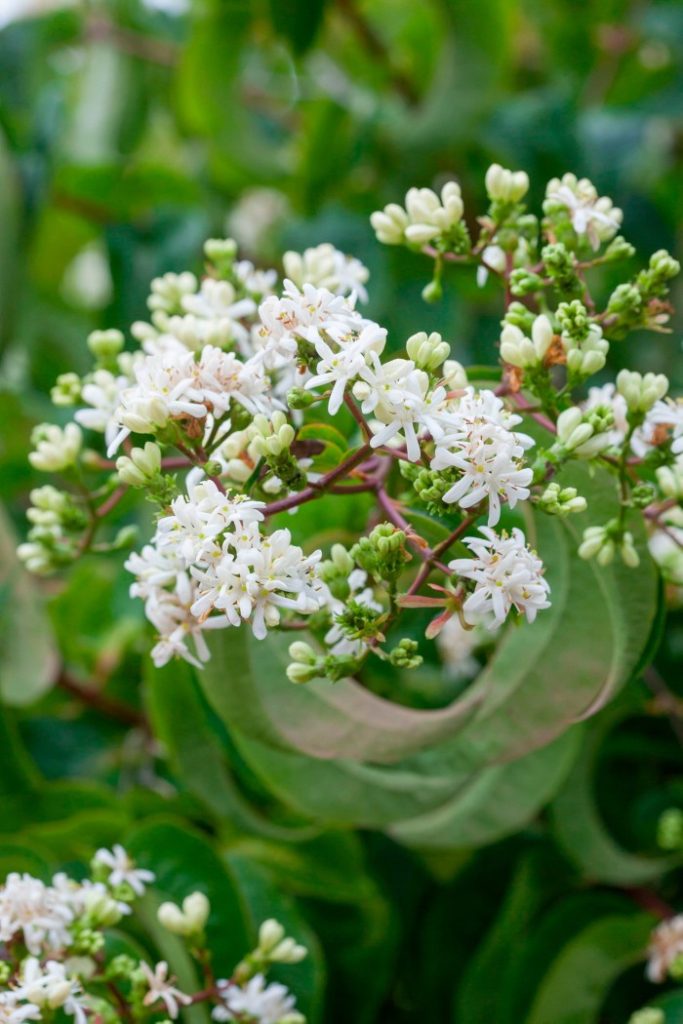Nietzsche, Burke and the secret to a happy garden

Unlock the Editor’s Digest for free
Roula Khalaf, Editor of the FT, selects her favourite stories in this weekly newsletter.
What a month of contrasts we have had. In the middle of it, big hailstones pelted down on my blue asters. I have never seen hail in a British September, nor have my Michaelmas daisies. To make the point, the hailstones fell on two successive days. The nights became unusually cold and heavy rain intervened. Then serene and sunny skies returned, before days of torrential rain concluded September. After all that Mother Nature throws at it, what, I wonder, is happy growing in my garden?
Strictly, the answer is nothing, neither plants nor wildlife. In his Untimely Meditations the philosopher Friedrich Nietzsche invited his readers to consider cattle, grazing as they passed by. They eat and leap, he remarked, but they are fettered to the moment and its pleasure or displeasure. Their shortened sense of time has a consequence: “they do not know what is meant by yesterday or today”, and so they are neither melancholy nor bored. We might well ask an animal, Nietzsche tells us, “Why do you not speak to me of your happiness, but only stand and gaze at me?” The animal, he suggests, would like to answer, but, he deftly concludes, would always forget what it was going to say.
Nietzsche is right. We still talk of happy bunnies, but none exist, not even when two of them engage in six-legged activity at night on my lawn. By happy plants I simply mean thriving plants. I will choose three that are thriving despite the hailstones, and will then address items well able to be happy in a garden: you and me.
My first thriving presence is Lady Boothby. She is a fuchsia of a most unusual kind. She does not spread: she climbs. I first became aware of her after seed specialist Thompson and Morgan’s research into unusual, commercially-neglected plants. It introduced Lady Boothby into its catalogue and now her Ladyship has several suppliers online. I bought one in a 1l pot in April for an excessive £12.95 and planted it in gravel enriched with rotted horse manure below a high west-facing wall. Above it there were lines of plain wire to support a clematis that had never made the effort to reach them. They have suited Lady Boothby. Since April she has grown ever upwards, to a height of 7ft in six months, climbing so fast that one of her stems broke in an autumn storm, a reminder that as in society, so in the garden, rapid climbers are fragile and need support.
Lady Boothby’s flowers are classically coloured, a red-purple on their sepals and a dark purple blue on their skirts or corollas. The flowers are not dazzlers but they appear freely and are a delight. Do not be rushed into paying more for a plant in a bigger pot. Buy this fuchsia in a 9cm pot early next spring or a litre one, no more, later. Manure the ground you plant it in and it will race away, even in semi-shade. I can picture it thriving on many walls or fences in urban back gardens. It is not a total cover so much as an elegant companion. It is hardy in most winters: in short, a winner.

My second thriving choice is the Seven Sons tree, Heptacodium miconiodes, which improves every year in a rough place in my garden. It came into cultivation in 1980 when seed from central China, its natural home, reached the Arnold Arboretum in Boston. When I bought it in 1999, I expected it to be a modest shrub. I had just felled a walnut tree that had become too shady too close to my house and that had never borne mature walnuts as the grey squirrels stole them first. I picked a heptacodium, expecting it to stop at about 5 or 6ft. I have now seen older trees — especially in the Arnold Arboretum, where the first seed-raised ones can be viewed — and realise it is a medium-to-tall tree at maturity, but can be pruned. Its curled, drooping green leaves are very pretty. Its little clustered heads of hard white flowers are superb this year and have the invaluable habit of sending up more from the centre of each cluster in order to repeat the performance when the others fade. They have a pleasant scent and lead on to small blue fruits.
My tree is thriving without any help from me and would surely thrive in urban gardens if they can accommodate its eventual height in semi shade. The 18th-century philosopher Edmund Burke once claimed that Britain’s “wise and salutary neglect” had been most important for the commercial success of the North American colonies. It is a sound principle for managing a heptacodium too.
When I ordered my third thriving companion I was told that it needed shade and damp soil and that I was being silly putting it in sun, facing south-east. I have been vindicated, and I now rate hesperanthas as essential plants for any garden, wet or dry, shaded or not. They are Crimson Flag Lilies, formerly schizostylis, and are also known as River Lilies, a habitat they like in the wild but do not require in our gardens. They have diversified into pinks, whites and so forth but the best is still the single scarlet Coccinea, which has been thriving in hail, wind and stony soil. Buy one plant and you will soon be able to divide it into dozens. It will also seed around of its own accord. The flowers are vivid in the garden from early September until mid-October and are excellent in vases indoors. Hesperanthas ought to flourish in urban gardens too, even in narrow beds along their boundaries, unless shaded by trees.

Thriving beauty in these three plants does not indicate happiness, but it projects it on to my other items, you and me. Is there a link between gardening and happiness and what is it? I have just been to the 30th birthday party of a fine charitable initiative which addresses this very topic, Bridewell Gardens, privately funded by donations, at Wilcote in Oxfordshire. Its director, Ruth Madder, has made it a recognised centre for sufferers from mental illness, who are referred by doctors and other professionals. The results are most impressive. They are testimonials to the hope and social interaction that working in a garden gives to those who have lost them.
The psychological benefits of gardening are now keenly asserted. Monty Don, the top TV presenter, gives time to sufferers from mental stress and depression. Sue Stuart-Smith, author of The Well Gardened Mind: Rediscovering Nature in the Modern World, described to us at Wilcote’s anniversary how in her mid-twenties she, a trained doctor and psychotherapist, married Tom, now a top garden designer, and came to realise that their two professions could interrelate. In general terms she and others talk of gardening as a matter of caring and sustaining a relationship, of feeling one is part of a bigger whole.
All very fine, but I also emphasise its ups and downs and stresses. All is not always rosy in a gardener’s mind. Gardening makes us happy over a length of time, but not for every minute. I will return to this fascinating topic another week: for now, I will just say you and I are not cows.
Find out about our latest stories first — follow @ft_houseandhome on Instagram
#Nietzsche #Burke #secret #happy #garden




